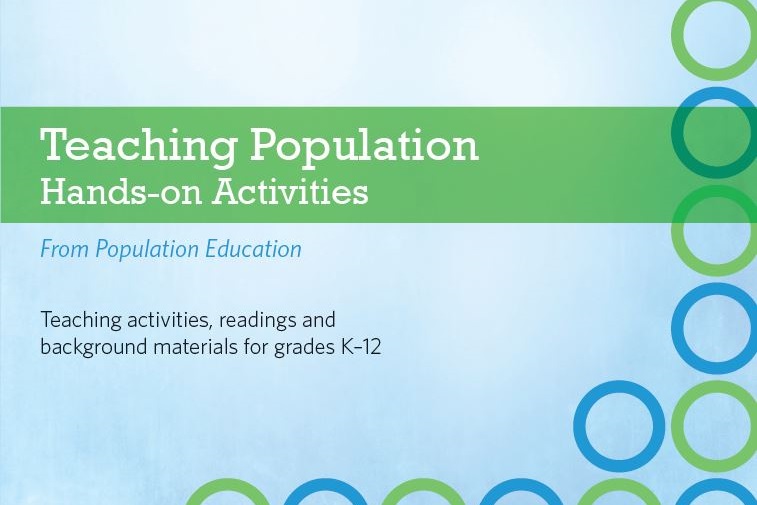Filter Products by Grade Level
Teaching Population: Hands-on Activities
$10.00
◊ Do you already own Teaching Population? Login here >>
Teaching Population is the ultimate multi-disciplinary tool to introduce students of all ages to how human population has grown and shaped the world around us. It’s ecology, geography, anthropology, economics, biology, history, civics and real-world math all rolled into one.
The resource is fully online – no book or CD-ROM needed! It offers 63 of our “best of” hands-on lesson plans and activities for grades K-12, along with 24 student readings. User-friendly menus help you search for activities by grade, subject level and teaching concept. In addition to activity lesson plans, you’ll find supplemental materials for teachers and students that include background readings, case studies and infographics.
After purchasing, you will receive a URL and passcode. Enter the site at any time to access up-to-date and classroom-ready resources.
Preview Lesson Plans & Readings
Sample a few of the lessons and readings found in the curriculum:
Lesson plans:
Crowding Can Be Seedy (pdf): A simulation and gardening lab give students hands-on experience with the effects of increasing population density.
Everything is Connected (pdf): Students identify ways that many factors in human society and the natural environment are interdependent by creating a concept map.
Food for Thought (pdf): In this global simulation, students act as the residents of five major regions of the world, compare various statistics that affect people’s health, happiness, and well-being.
See the demonstration video »
Lessons for Life (pdf): Students read and discuss a short conversation between two Ethiopian girls, watch two photo essays of school girls in less developed countries, and interpret a graph illustrating the link between female education and fertility rates worldwide.
Panther Hunt (pdf): Students gain an understanding of carrying capacity when they act as predatory animals in a finite area and attempt to accumulate enough food to stay alive.
See the demonstration video »
Population Riddles (pdf): Riddles that help students conceptualize large numbers and understand the concepts of exponential growth and doubling time.
Pop Quiz (pdf): A pre-test/post-test quiz designed to give teachers and students an overview of world and U.S. population trends.
A World of Difference (pdf): Using dried beans and nuts, students model the probability of biodiversity loss, and the impact human population growth can have on the variety of species in two different forest ecosystems.
Readings:
Kerala: A Model Case for Education – The Indian state of Kerala leads the country in women’s education, family planning use and social development. (high school case study)
The Human Footprint: Land – As population grows, we develop wild areas and arable land and overuse resources like soil, minerals, and timber. Students analyze how our land use impacts habitats and ecosystems while exploring ways to preserve land resources. (middle school)
Oceans of Problems for the Blue Planet – Take a closer look at the largest habitat on Earth and see the impact of humans’ demands for food sources, transportation, and resources. (high school backgrounder)
What are People’s Basic Needs? – An elementary-level reading that describes the basic needs for all people.



